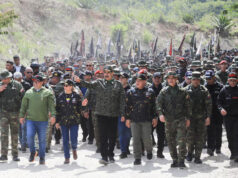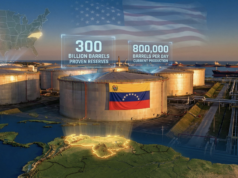WASHINGTON: Boeing’s new Starliner astronaut capsule was launched from Florida on Wednesday in a much-delayed first test flight carrying a crew.
This marks a milestone in the aerospace giant’s ambitions to step up its competition with Elon Musk’s SpaceX.
The CST-100 Starliner, with two astronauts aboard, lifted off from the Cape Canaveral Space Force Station in Florida, strapped to an Atlas V rocket furnished and flown by the Boeing-Lockheed Martin joint venture United Launch Alliance (ULA).
Liftoff! Go #AtlasV! Go Centaur! Go #Starliner!
Godspeed, Butch Wilmore and @Astro_Suni! pic.twitter.com/kTA8fjcLP7
— Boeing Space (@BoeingSpace) June 5, 2024
The gumdrop-shaped capsule and its crew were headed for a rendezvous with the International Space Station (ISS). This comes two years after the Starliner completed its first test voyage to the orbital laboratory without astronauts aboard.
Docking manoeuvres with crew will pose another test for Starliner, followed roughly a week later by the test of returning to Earth.
Boeing intends for Starliner to compete with SpaceX’s Crew Dragon capsule, which since 2020 has been NASA’s only vehicle for sending ISS crew members to orbit from U.S. soil.
Last-minute issues had nixed the Starliner’s first two crewed launch attempts. A May 6 countdown was halted two hours before liftoff over three issues that required weeks of extra scrutiny. Another try last Saturday was halted less than four minutes before liftoff because of a glitch with a launchpad computer.
On Wednesday, the Atlas V’s engines thundered to life in flaming clouds of exhaust and coolant-water vapor as the spacecraft roared off its launch pad into the sky from Florida’s Atlantic Coast.
The Atlas V upper stage separated from the rocket’s lower section about four minutes into flight, followed by Starliner’s separation from the second stage. Now on its own in space, Starliner will ascend deeper into space and fire its onboard thrusters to plug itself into orbit and kick off its 24-hour catch-up with the ISS.
The inaugural crew for the seven-seat Starliner includes two veteran NASA astronauts: Barry “Butch” Wilmore, 61, a retired U.S. Navy captain and fighter pilot, and Sunita “Suni” Williams, 58, a former Navy helicopter test pilot with experience flying more than 30 different aircraft.
They have spent a combined 500 days in space over the course of two ISS missions each. Wilmore is the designated commander for the flight, with Williams in the pilot seat. They are due to spend about a week at the ISS before returning to Earth.
Boeing, with its commercial airplane operations rocked by a series of crises involving its 737 MAX jetliners, needs a win in space for its Starliner venture, already several years behind schedule and more than $1.5 billion over budget.
Meanwhile, SpaceX’s Crew Dragon has become a dependable taxi to orbit for NASA. That capsule and Starliner are among the first in a new generation of privately built spacecraft – seeded with NASA funding – designed to fly astronauts to low-Earth orbit and the moon under the U.S. space agency’s Artemis program.
If all goes as planned, the capsule will arrive at the ISS on Thursday and dock with the orbiting research outpost some 250 miles (400 km) above Earth.
Wilmore and Williams are due to join ISS’s current seven resident crew members before riding the capsule back to Earth for a parachute and airbag-assisted landing in the U.S. Desert Southwest – a first for a crewed NASA mission.
Getting Starliner to this point has been a fraught process for Boeing under its $4.2 billion fixed-priced contract with NASA, which wants the redundancy of having two different U.S. rides to the ISS, an outpost expected to retire around 2030.
Meanwhile, SpaceX’s fourth test launch of its Starship rocket system, another chapter in its quest to build a reusable satellite launcher and moon lander, is due for liftoff on Thursday from Texas.
(REUTERS)
In a career spanning three decades and counting, Ramananda (Ram to his friends) has been the foreign editor of The Telegraph, Outlook Magazine and the New Indian Express. He helped set up rediff.com’s editorial operations in San Jose and New York, helmed sify.com, and was the founder editor of India.com.
His work has featured in national and international publications like the Al Jazeera Centre for Studies, Global Times and Ashahi Shimbun. But his one constant over all these years, he says, has been the attempt to understand rising India’s place in the world.
He can rustle up a mean salad, his oil-less pepper chicken is to die for, and all it takes is some beer and rhythm and blues to rock his soul.
Talk to him about foreign and strategic affairs, media, South Asia, China, and of course India.




